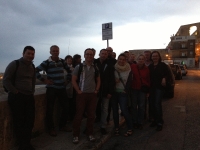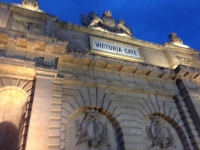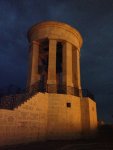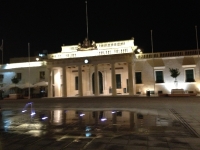Malta, the unique island in the Mediterranean boasts of a capital city built by the Knights of St John and nicknamed as the city built by gentlemen for gentlemen. Named after Grand Master Jean Parisot de la Valette, who successfully defended the island from an Ottoman invasion in 1565, the city was given the official name by the Order of Saint John and was called Città Umilissima (The Most Humble City).
Valletta is the smallest capital of the European Union but every one of the millions of tourists that visits the island every year makes it a point to visit because it is a splendid city built in the Medieval era and has a mixture of Baroque, Mannerist, Neo-Classical and Modern architecture. Our students at Maltalingua insist on visiting Valletta and Maltalingua is always too happy to please. After all our motto is to aim to please.
Valletta is a UNESCO World Heritage site and is often described as an open-air museum. A true monument built nearly five centuries ago, Valletta has welcomed emperors, heads of state, artists and poets and is now the permanent seat of the Maltese government.
Charming, old-fashioned cafés and wine bars, are today’s attractions as regards to the hospitality sector. Fine restaurants found in refurbished character houses filled with history and located in squares, narrow streets, alleys and sometimes even in underground levels, each carry bags of folk tales… If only the walls could speak!
Valletta’s main streets: Triq ir-Repubblika, Triq Merkanti, Triq l-Ifran and Triq San Pawl are among many other streets sought after by shoppers. Although they are centuries old, these streets now host franchise outlets and other big stores making them the commercial part of the city. Triq Santa Luċija is famous for gold trade whilst the lower part of Triq Merkanti hosts an open air market daily.
While the whole world was expecting doom in 2012, Valletta was unanimously named European Capital of Culture for 2018, by a jury of experts. The official declaration of the title is expected to take place at the next EU Council of Ministers meeting, in May 2013.
St John’s Co- Cathedral, is just one of Valletta’s most important buildings. Formerly the Conventual Church of the Knights of Malta, it has the only signed work and largest painting by Michelangelo Merisi da Caravaggio.
Valletta was badly hit by bombing during World War ll. Although severely bombed, Valletta rose again within a few years. Unfortunately one of its treasures mostly damaged was the former Royal Opera House which is situated right in the heart of the city. It is currently being restored.
The magic of Malta’s Capital City lies within it it. Valletta is a mirror of the past whilst keeping the pace of the future. It offers a walking tour through history and a true celebration of what culture and art are all about.
written by Katrin Risiott






